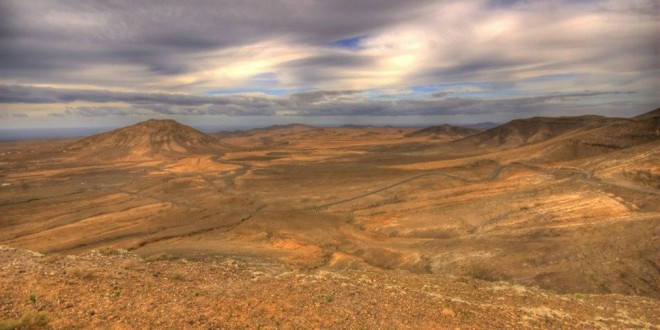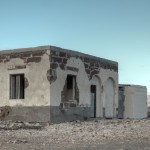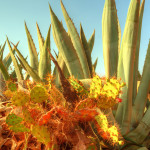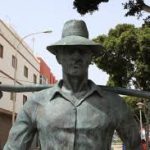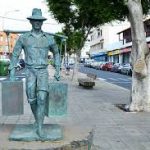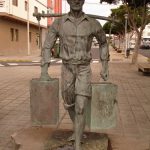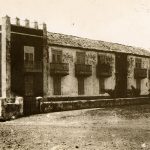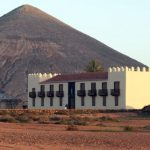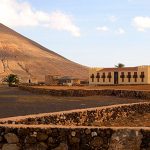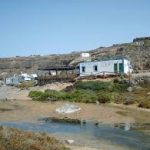THIRSTY FUERTE
An article by Bernie Power with The Voice
Fuerteventura´s proximity to the African coast has meant that it has been blasted by hot winds and deprived of rainfall for many years.
Around 2000 years ago, when the first settlers landed, they chose to stay in the fertile areas around the valleys. These areas once had fresh water rivers running through them and are now known as La Antigua, Pajara and Agua de Bueys. When the Europeans arrived in the 15th century, the usual mismanagement of resources took place and most people had no farming skills so there was very little available to supply so many people.
AGRICULTURE ARRIVES
By the 16th century things started to get better and La Oliva was founded. Agriculture improved but for some years it never rained at all, making agriculture almost impossible. When rain did finally fall, it needed to be caught and savoured so many ingenious methods were employed. If you visit the museum in La Cilla in La Oliva there is a display which shows the terrace system and mounds that were used to capture whatever moisture was available. Every house had a well, known as an aljibe, and the locals could only grow whatever they were able to water. This lead to the Nopale cactus growing everywhere across the island as It could supply food for the family, needed no watering and also provided essential liquid in times of drought.
THE WATER CARRIERS
As you can imagine, many people died during long periods of drought and during the 18th century the island witnessed hundreds of people emigrate to the Americas, Venezuela and Louisiana rather than die of thirst. Puerto de Cabra (renamed Puerto del Rosario in the late 1950’s) didn’t really exist until the early 1800´s, when barrels and tanks of water began to be shipped into the port. Once the water began to arrive, so did the people and the town began to grow. The water carrier ´El Aguador´ used to balance two big buckets of water on a pole over his shoulders and deliver it to your door. There is a great statue dedicated to these men on the road past the police station in Puerto.
WATER RATIONS
The droughts continued and every eight to ten years or so the water would dry up again, the crops would once again fail and people would leave. There were no lakes or rivers in which to get water, there wasn’t even a pond! Even the beginning of the 20th century witnessed an awful drought period. For the people of La Oliva, water was rationed and they had to go to the well at the Casa de la Marquessa (now known as the Casa de los Coroneles) to get it. You can still see the large heavily protected open well today. There is also another one at the rear of the house which doubled up as swimming pool in the good times! To find our more about the lady of the house, click here!
FINALLY A SOLUTION
In 1945 reservoirs ‘embalses´ were thought to be the solution and there is a big empty one on the road to Los Molinos, which is well worth a visit. It failed to supply enough water to irrigate the fields and what water it did have was too salty to use. Then another massive drought arrived, and once again people had to relocate. It was not until the 1980´s that desalination arrived. The plant was based in Puerto Del Rosario and although very limited, was welcomed as a miracle. Nowadays we have some of the most technically advanced systems which are powered by wind turbines, like the ones you can see in Corralejo. The water for the island now comes from the sea – and there is still plenty of that. So from the parched sailors staring at the waves and gasping to drink it, we now do just that. More farmers are returning to their fields and as you can see things are turning green again, maybe signifying that the fatal droughts of Fuerteventura are finally over for good!
Photos by Still Light Photography @ The Voice Fuerteventura
 The Voice – Fuerteventura Keep up to date in Fuerteventura with The Voice Magazine
The Voice – Fuerteventura Keep up to date in Fuerteventura with The Voice Magazine
